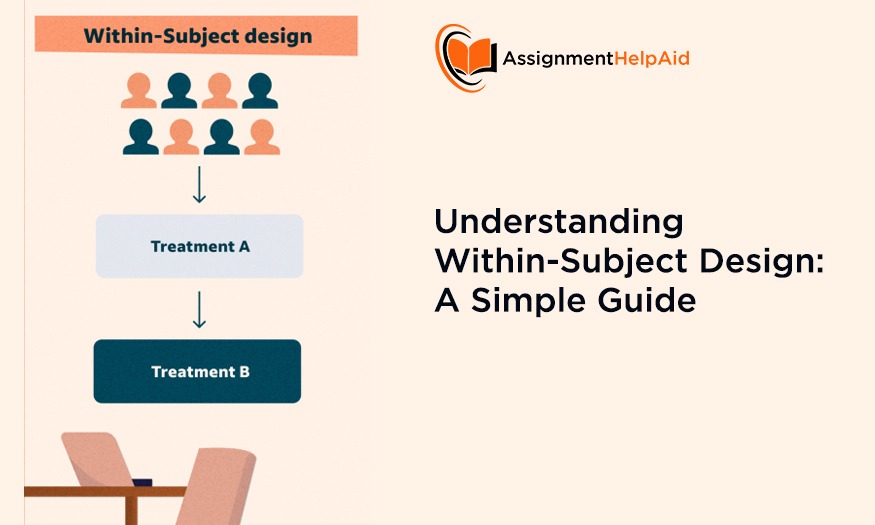
Understanding Within-Subject Design: A Simple Guide
A within-subject design is a type of experimental setup where each participant is exposed to every treatment or condition being tested. In other words, all participants experience all the different independent variables that the experiment aims to study. These variables are carefully controlled and manipulated to observe their effects. If this sounds confusing, don’t worry. Continue reading to gain a deeper understanding of how within-subject designs work and why they are used in research.
What is a Within-Subject Design?
When you hear about within-subject design, you might wonder what it means. In simple terms, it is an experimental setup where every participant experiences all the treatments and conditions being tested.
Understanding Treatments
In this context, a “treatment” refers to different levels of an independent variable that the experimenter controls. Essentially, all participants are exposed to each level of the variable being studied.
How It Works
In a within-subject design, researchers apply different treatments or manipulations to see if there is a cause-and-effect relationship with the dependent variable. This approach is also known as dependent groups or repeated measures design. It involves comparing measurements from the same participants across different conditions.
Key Point
The crucial aspect of a within-subject design is that every participant takes part in every condition. This method helps researchers understand how changes in the independent variable affect the outcomes measured by the dependent variable.
What’s the difference between within-subject design and between-subject design?
When you learn about within-subjects designs, you also encounter between-subjects designs. Here’s the distinction:
In a between-subjects design, participants experience only one condition, and researchers compare different treatment groups. There are control groups and experimental groups, differing in variables like gender, ethnicity, or test scores. Results from these groups are compared.
In contrast, within-subjects designs use participants as their control, providing baseline scores across various conditions. “Within” means comparing conditions within the same group or individual, while “between” compares conditions across groups.
For example, let’s say you want to study if the college learning environment affects test scores. With a between-subjects design, you’d split participants into:
- A control group taking an on-campus course.
- An experimental group taking the same course online.
You’d compare test scores between these groups.
With a within-subjects design, all participants experience every condition:
- Half take part of the course on campus before the test.
- The other half takes part of the course online before the test.
You’d vary the order of conditions among participants. Then, compare test scores within subjects across conditions.
Examples of within-subjects design:
Example 1: Tracking Perceptions Over Time
Imagine you’re a social researcher interested in understanding how people’s perceptions of the pandemic change over time. To explore this, you gather a sizable group of participants early in 2020, when the pandemic began to impact daily life significantly. Then, at regular intervals, such as every two to three months, you administer the same survey to the same group of participants. This survey includes questions aimed at gauging their fear of contracting COVID-19, perhaps using a Likert scale where participants rate their fear from 1 to 7.
By utilizing a within-subjects design, you’re essentially tracking changes within the same individuals over time. Instead of comparing different groups of people, you’re examining how the perceptions of each participant evolve as time progresses. For instance, you can analyze whether individuals’ fear levels fluctuate in response to changing pandemic conditions or public health measures.
Example 2: Exploring the Impact of Messaging Styles
Suppose you’re conducting a study to investigate how different messaging styles influence people’s generosity towards environmental causes. In this scenario, you present each participant with five short stories related to climate change, each crafted with a distinct tone and style. After reading each story, participants are asked about their opinions on the issue and their willingness to donate to a relevant environmental cause.
To ensure the study’s integrity, participants may also be prompted to answer unrelated questions, preventing them from deducing the study’s true purpose. By employing a within-subjects design, you’re able to compare participants’ responses across the various story tones within the same individuals. This approach allows you to discern whether certain messaging styles elicit greater levels of generosity compared to others, providing valuable insights into effective communication strategies for environmental advocacy efforts.
Disadvantages of a within-subjects design:
While a within-subjects design can be useful in some situations, it also has significant drawbacks.
One major issue is the potential for a carryover effect. This means that participating in one condition might affect how someone performs in all the other conditions. For example, if someone does yoga first, it might affect how well they do in jogging later or even their memory test performance.
Another problem is fatigue. Going through multiple treatments or tests can make participants tired, bored, or just not interested anymore.
Additionally, there’s the risk of practice effects. For instance, if participants do different levels of treatment or take measurement tests several times, they might get better at them. This can make it hard to know if any changes in results are due to the treatment levels themselves or just from practicing.
Seek top-notch assistance for your Within-Subject Design assignment from our proficient experts!
Our dedicated assignment developers excel in providing comprehensive support throughout the assignment writing journey. Whether you’re grappling with understanding the nuances between “between” and “within” subject design or unraveling its disadvantages, our seasoned experts can guide you through every step with expertise. With just a click, gain access to our vast team of 5000+ experts who ensure:
- Unrestricted access to our extensive data archives
- Cost-effective assistance with additional discounts for your benefit
- Round-the-clock live student support for immediate assistance
- Guarantee of 100% plagiarism-free content
- Timely delivery of solutions well before the deadline
- Secure and convenient payment options to ensure smooth transactions
- Utmost confidentiality regarding students’ academic and financial documents
If you need instant homework help or simply wish to delve deeper into understanding what constitutes a within-subjects design, follow these straightforward steps:
- Fill out the form with essential details about your assignment requirements.
- Complete the payment process securely.
- Receive personalized assistance from the most suitable expert assigned to you.
Bid farewell to the days of fretting over perfecting your within-subjects design assignments! Embrace peace of mind and academic success by booking our experts today to secure top grades effortlessly.
Final Thoughts
In conclusion, the within-subject design offers a valuable approach to experimental setups, where participants experience all treatments or conditions being tested. This method allows for a thorough examination of the effects of independent variables on the dependent variable, with each participant serving as their control. While the within-subject design has its advantages, such as increased sensitivity to detecting effects, it also presents challenges.
One significant drawback is the potential for carryover effects, where participation in one condition influences performance in subsequent situations. Additionally, participants may experience fatigue or practice effects, which can impact the reliability of results. Despite these limitations, the within-subject design remains a valuable tool in research, offering insights into causal relationships and enhancing our understanding of various phenomena.
If you’re navigating a within-subject design assignment and require assistance, our team of experts is here to support you every step. With access to extensive data archives, cost-effective solutions, and round-the-clock support, we ensure a seamless experience. Embrace academic success and eliminate the stress of assignment completion by reaching out to our experts today.

